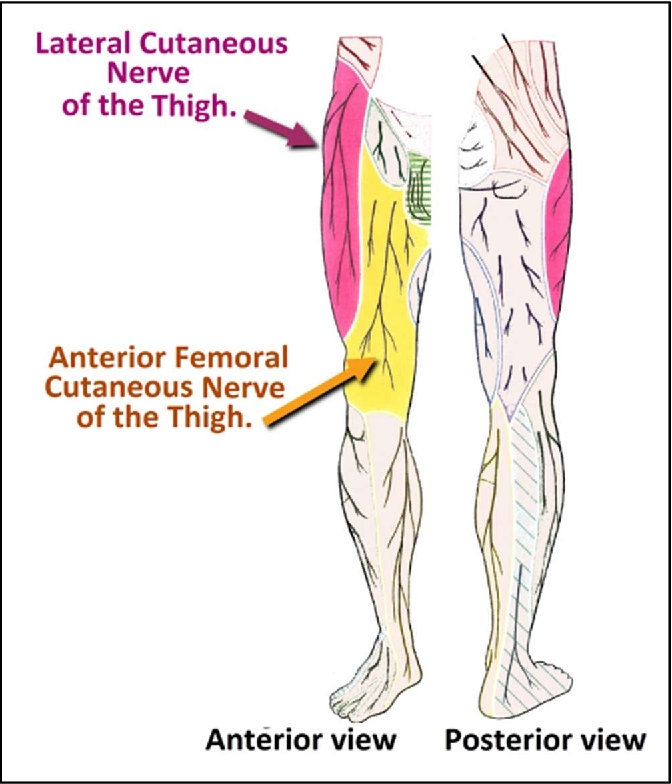G
Succinate
Amino Acids
Neurotransmitters
IMPORTANT NOTICE
This information is for educational purposes only, to facilitate quality conversations between patients and their personal physician(s). Several essential considerations are required to safely administer any protocol for an individual. This information is NOT intended to diagnose, treat or encourage self-treatment of any medical condition.
This page is under development. Working links will provide starting information. Please let us know about your interest in this page by emailing us here, and check back soon.
File Access
Meralgia Paresthetica
Brain-Neuro-Psych Program
IMPORTANT NOTICE
This information is for educational purposes only, to facilitate quality conversations between patients and their personal physician(s). Several essential considerations are required to safely administer any protocol for an individual. This information is NOT intended to diagnose, treat or encourage self-treatment of any medical condition.
This page is under development. Working links will provide starting information. Please let us know about your interest in this page by emailing us here, and check back soon.
Meralgia Paresthetica (“MP”) is a condition where the territory of the lateral femoral cutaneous nerve (a sensory nerve) feels altered, involving numbness, tingling or other variations from normal sensation. It can occur on both sides of the body, but often is only on one side. There is often a mechanical irritant, such as change in belt or weight that can compress the nerve as it travels under the inguinal ligament and near the bony anterior-superior-iliac-spine (ASIS).
Since MP is rare, there is often a co-existing issue that either renders the nerve vulnerable and/or impedes healing. Superficial nerves, like the skin, are designed to withstand certain extremes of challenge, and to repair effectively when the trauma causes a wound or other damage of a moderate magnitude. Co-existing conditions that can contribute to the development of MP at a “root-cause” level include: unknown diabetes, unknown neuropathy(ies), deficiencies of key nutrients such as Vitamins B1 and B12, and/or toxicity with known neuro-toxins including alcohol, lead (Pb), fluoride, and certain myco-toxins (mold/fungal-based toxins).
Treatment involves identifying the causal factors, nutritional support and proper yoga or other routines geared toward stretch, strength, awareness and balance.
File Access
Neuropathy (Peripheral) Copy
Brain-Neuro-Psych Program
IMPORTANT NOTICE
This information is for educational purposes only, to facilitate quality conversations between patients and their personal physician(s). Several essential considerations are required to safely administer any protocol for an individual. This information is NOT intended to diagnose, treat or encourage self-treatment of any medical condition.
This page is under development. Working links will provide starting information. Please let us know about your interest in this page by emailing us here, and check back soon.
Neuropathy implies two things: 1) an insult to a nerve, such as chemical or mechanical, and 2) impaired ability to repair. By dissecting the factors involved in its development and persistence, most seekers can obtain some degree of relief.
Until this page is more fully developed, this important topic can be approached by looking at Lead (Pb) neuropathy which most adults have to a certain degree due to accumulation over several decades. Lead affects both the nerves and the brain and is one of several toxins that when addressed can facilitate healing.
File Access
Neuropathy (Peripheral) Copy
Brain-Neuro-Psych Program
IMPORTANT NOTICE
This information is for educational purposes only, to facilitate quality conversations between patients and their personal physician(s). Several essential considerations are required to safely administer any protocol for an individual. This information is NOT intended to diagnose, treat or encourage self-treatment of any medical condition.
This page is under development. Working links will provide starting information. Please let us know about your interest in this page by emailing us here, and check back soon.
Neuropathy implies two things: 1) an insult to a nerve, such as chemical or mechanical, and 2) impaired ability to repair. By dissecting the factors involved in its development and persistence, most seekers can obtain some degree of relief.
Until this page is more fully developed, this important topic can be approached by looking at Lead (Pb) neuropathy which most adults have to a certain degree due to accumulation over several decades. Lead affects both the nerves and the brain and is one of several toxins that when addressed can facilitate healing.
File Access
Glucuronidase
IMPORTANT NOTICE
This information is for educational purposes only, to facilitate quality conversations between patients and their personal physician(s). Several essential considerations are required to safely administer any protocol for an individual. This information is NOT intended to diagnose, treat or encourage self-treatment of any medical condition.
This page is under development. Working links will provide starting information. Please let us know about your interest in this page by emailing us here, and check back soon.
File Access
Aquaporins
IMPORTANT NOTICE
This information is for educational purposes only, to facilitate quality conversations between patients and their personal physician(s). Several essential considerations are required to safely administer any protocol for an individual. This information is NOT intended to diagnose, treat or encourage self-treatment of any medical condition.
Aquaporins…
This page is under development. Working links will provide starting information. Please let us know about your interest in this page by emailing us here, and check back soon.
File Access
Equol
IMPORTANT NOTICE
This information is for educational purposes only, to facilitate quality conversations between patients and their personal physician(s). Several essential considerations are required to safely administer any protocol for an individual. This information is NOT intended to diagnose, treat or encourage self-treatment of any medical condition.
This page is under development. Working links will provide starting information. Please let us know about your interest in this page by emailing us here, and check back soon.






